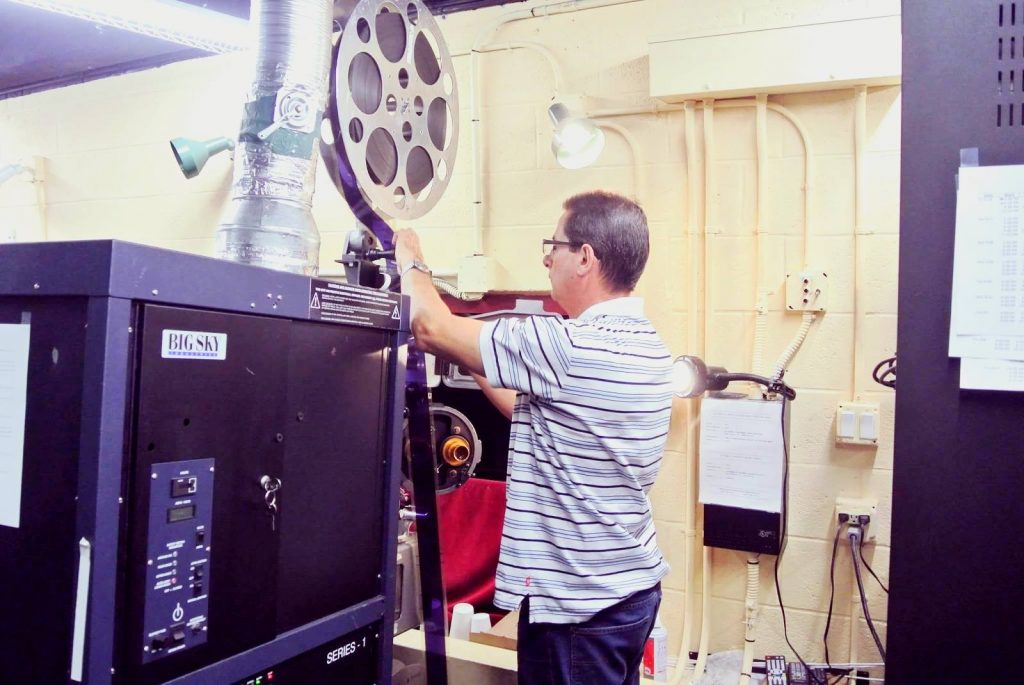Have you ever thought about how a film gets projected onto the screen at your favorite theaters? Meet Pablo Blanco, film projectionist for the Coral Gables Art Cinema, who shares with us the love of film stock from boyhood in Cuba working in his father’s theater and the modern film technology he works with now.

As we take our seats in our local movie theaters and await the dimming of the lights to begin our movie-viewing experience, there sits an underappreciated and lone figure working in the dark to bring these images to the big screen. The film projectionist works in a field which is becoming increasingly obsolete with every new technological advancement. We are living in the digital age of cinema and digital projections have become the norm for their ease in distribution and projection compared to the classic film reels of years ago.
Pablo Blanco has been working in film projection his whole life. In his opinion, working with film runs in his blood; his father owned a theater in Cuba and his mother worked in the ticket booth. Due to his extensive knowledge and experience in projecting classic film stock, he works part time at local art house cinemas for their special screenings of 35 mm or 70 mm films. The rest of his time, he works at Continental Film and Digital Labs. I spoke with him on the night of the screening of Ghostbusters in 70mm at the Gables Cinema. Ghostbusters was originally filmed in 35mm and enlarged to be seen in 70mm.
There are few copies in existence of the 1984 Bill Murray comedy in 70mm and Pablo was entrusted to work with the six reels of one for the After Hours Program at the Gables Cinema. Rarely do they allow these reels to be used for public viewing purposes, they are instead preserved and archived. Pablo says that film projectionists with experience in working on these reels are almost nonexistent nowadays.
During the screening of Ghostbusters, there was a brief technical glitch. A less experienced projectionist in his place would have probably hesitated when the projector’s main drive belt disconnected from the machine. Yet, Pablo seamlessly began cranking the remainder of the film by hand so as to keep the audience immersed in the story. You would think all he had to do was set up the reel and sit back to enjoy the movie, but his job entails so much more than that. He has to wait for the exact moment that one reel finishes – using the cue marks at the corners of the film as an indicator – to then begin projecting the next one and so on between two projectors, while also keeping an eye out for any unforeseen problems.
While Pablo worries about the necessity of his job, as more theaters rely on digital projection, he also praises the efficiency of the technology. While Ghostbusters was transported in a crate and the reels are heavy and impractical to handle, the digital copy of films such as Like Crazy are sent in a small hard drive which is simply hooked up to the projector’s computer. While it seems sad to lose the projection of classic film reels, it is also inspiring to see how far we have come in the film industry. Pablo remembers being in awe of projecting an independent film which was shot on two cell phone cameras. Speaking with a projectionist who looks at these advances in film technology as a gift rather than a misfortune, I realized how digital progress is giving a voice to those who may have never been able to present their stories and allowing them to connect to people from around the world through a medium which is inclusive, enlightening, and captivating.


